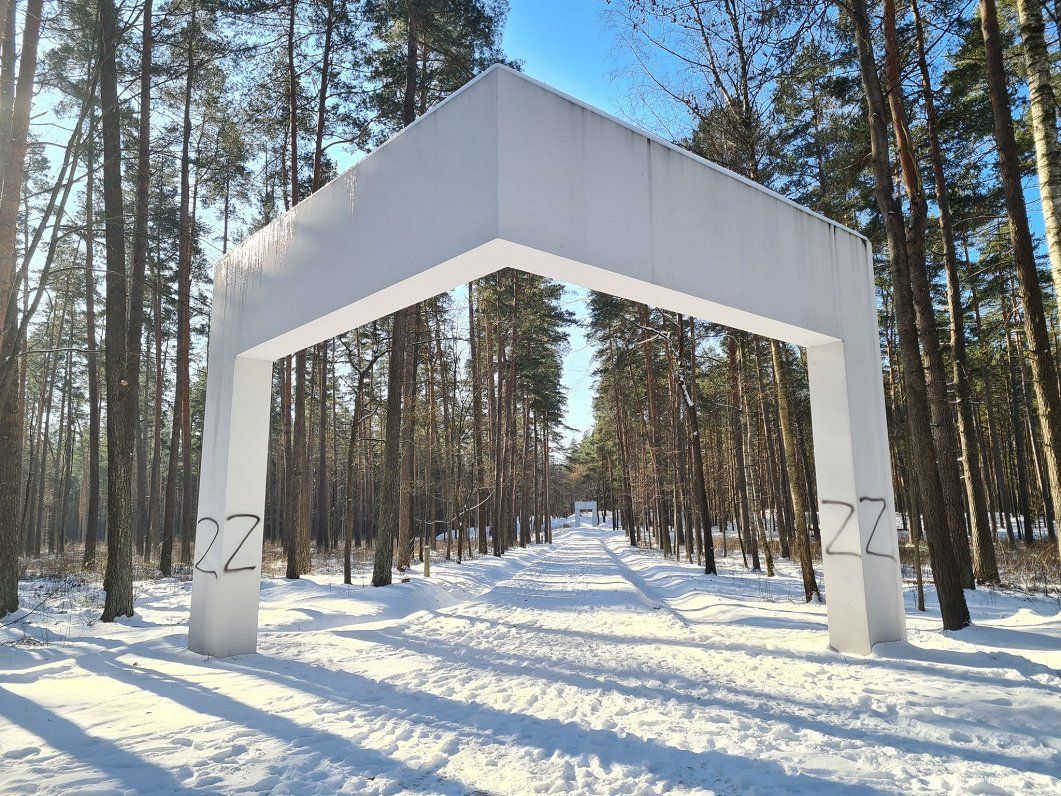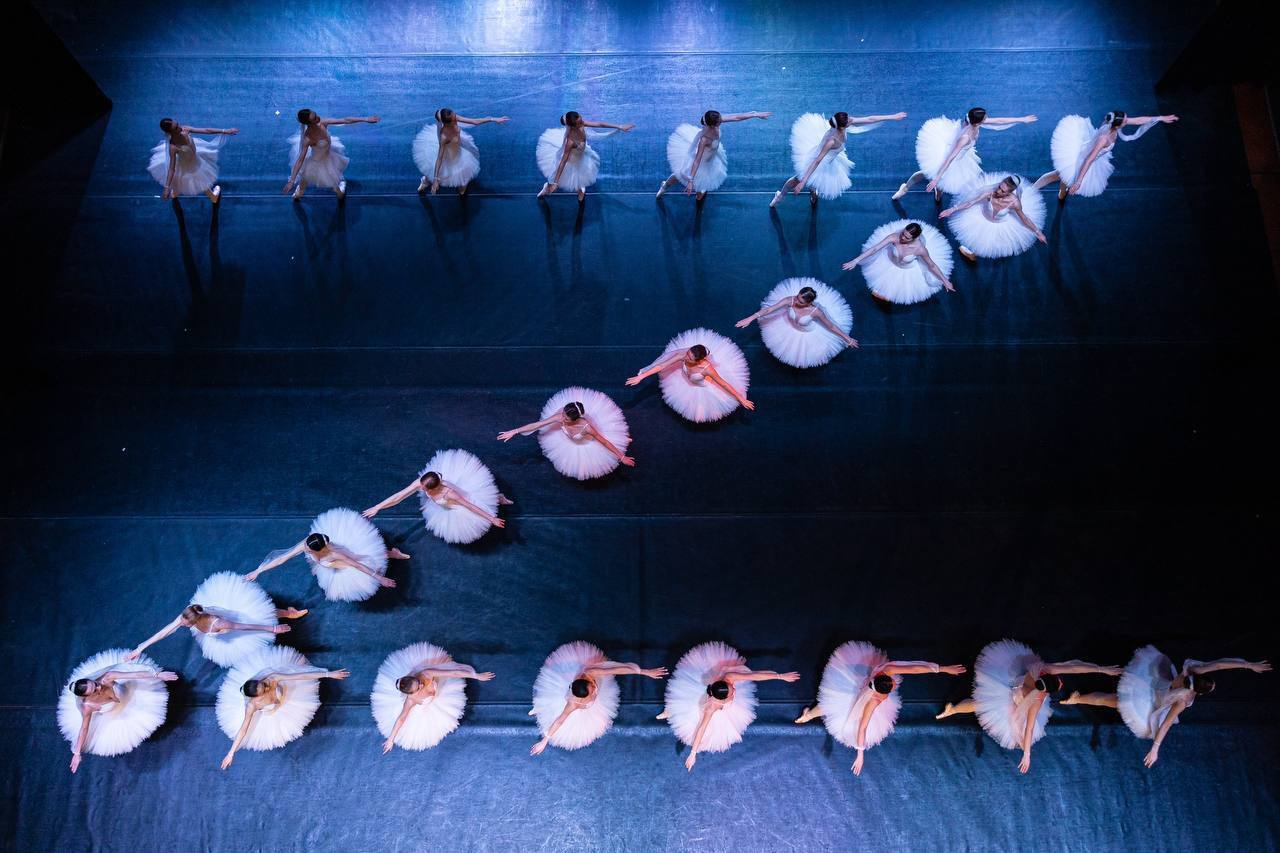A simple letter on a Holocaust memorial in Riga. A 750-year-old cathedral in Cologne defaced with these markings overnight. The same symbol on NATO vehicles moments before 30 peacekeepers were bloodied in Kosovo's worst regional violence in years.
Banned in eleven countries, this symbol now stands shoulder to shoulder with the Nazi swastika — and for good reason.
Russia's "Z" has jumped from tanks in Ukraine to walls around the world — becoming the new visual shorthand for intimidation. Despite being outlawed in multiple countries, this symbol keeps appearing overnight from Chicago to Cologne, extending Russia's shadow war to 15 countries and counting.
What broke Ukraine’s borders now stains walls and memorials across the West — and it’s far more than random vandalism. These symbols of Russia’s war are weapons in an asymmetric campaign to intimidate diaspora communities, test the limits of free societies, and normalize extremism in plain sight, probing where Moscow’s next frontlines might carve through.
The birth of the Russian swastika
The "Z" and "V" began as simple tactical markings on Russian military vehicles during the initial phase of Ukraine's invasion. Military analysts initially suggested they served practical battlefield purposes — distinguishing Russian units from Ukrainian forces using similar Soviet-era equipment.
Their use wasn’t entirely new — similar markings had appeared on Russian vehicles during the war in Syria and the occupation of Crimea. Yet even as the symbols spread rapidly in 2022, their meaning remained unclear. According to Ukraine’s Ministry of Defense, they marked Russia’s military districts: Z for zapadnyi (West), V for vostochnyi (East), and a triangle for the South.
However, what started as battlefield markers instantly morphed into a propaganda tool – thanks pro-Kremlin outlets that quickly seized on the "Z," turning it into a nationalist emblem. In the invasion’s first weeks, the state-run RT channel launched "Z" and "V" merch, sparking a wave of marketing that soon flooded Russian businesses and public spaces.

Russia’s defense ministry jumped on the trend too, plastering the symbols across social media, embedding them into slogans like "Zakanchivaem voiny" (We finish wars) and "Za mir" (For peace), swapping Cyrillic letters for the Latin Z and V. The symbols exploded across the country — on government buildings, billboards, pro-war rallies, even in horrifying stunts like lining up terminally ill children to form a giant "Z" in a hospice courtyard.
Meanwhile, outside Russia, these symbols were quickly condemned as extremist. At least 11 countries have banned their public display, and international brands like Samsung and Zipair Tokyo have scrubbed the letter Z from their logos to avoid any association with Russian aggression.
Russian war symbols mark the new frontlines
The Wall Evidence project reveals a pattern behind the pro-Russian graffiti spreading abroad:
- 75.9% featured symbols of Russian aggression (Z, V, ZOV)
- 7.2% glorified Russia or Putin
- 4.8% attempted to justify the invasion as “fighting Nazism”
- 3.6% denied Ukraine’s right to exist as a sovereign country
- 3.6% defaced Ukrainian names, monuments, or flags
- 2.4% contained explicit anti-Western threats
These messages aren’t just slogans. They function as psychological and political instruments — soft weapons deployed in public space. Their purpose is to normalize aggression, test what local authorities will tolerate, and desensitize the public to extremist narratives.
In many countries, especially post-Soviet states like the Baltics, the strategy is even sharper. Here, Russia treats public space like contested ground, using its as a hybrid warfare tool in area Moscow considers its geopolitical backyard – with 580 incidents recorded just in Latvia in 2023 alone.
By targeting Holocaust memorials, Ukrainian monuments, and national messaging, the Kremlin not only seeks to provoke outrage but to blur the lines between victim and aggressor, liberator and occupier — a classic disinformation tactic used to fracture collective memory and political clarity.
How Putin’s swastika hijacks Holocaust memory
One of the most disturbing patterns in Russia’s visual propaganda campaign abroad is the systematic defacement of Holocaust memorials — weaponizing World War II memory, which is central to Russia’s propaganda framing of its invasion as “de-Nazification.” This way, Moscow twists history to justify aggression, blur moral boundaries, and recast itself as a liberator rather than the perpetrator of a new war.

In Riga, Latvia, vandals repeatedly spray-painted the pro-war “Z” and “Russia” on the Biķernieki memorial, a mass grave for Jews murdered by the Nazis. The same symbols appeared in Vilnius, Lithuania, on the Paneriai memorial, another Nazi execution site. Ephraim Zuroff, director of the Simon Wiesenthal Center in Jerusalem condemned this as an attempt to falsely tie Jewish communities to Russia’s invasion and demanded an investigation.
This may be exactly what the Kremlin wants. tactic serves to provoke outrage, distort history, and test how governments and diaspora groups react under psychological pressure. By desecrating symbols of atrocity with the same marks now linked to violence in Ukraine, Russia blurs moral boundaries and poisons collective memory – a classic hybrid warfare strategy to fracture unity and stoke tensions across ethnic, political, and generational lines.
Hunting down Ukrainians worldwide
Trending Now
Another pattern emerging from Z-symbol vandalism is its targeted use against Ukrainian diaspora communities — not just as provocation but as a calculated tactic of psychological warfare.
In North America especially, pro-Russian symbols have appeared on churches, cultural centers, small businesses, and even Ukrainian children's camps. These aren't just acts of hate — they're designed to make Ukrainian immigrants feel vulnerable, watched, and unwelcome, even thousands of miles from the battlefield.
In Toronto, Canada, a popular Ukrainian bakery was vandalized with slogans like “Russia is power” and the Z symbol early into the war, with the banner “Stand with Ukraine” being torn down from its walls days later. The perpetrator was later arrested for both hate crimes and illegal weapons possession — a chilling reminder of how ideological intimidation often overlaps with real-world threats.

In Chicago, pro-Russian graffiti appeared throughout Ukrainian Village — a historic neighborhood home to one of the largest Ukrainian-American communities — including on the Ukrainian National Museum, a church, and a veterenary clinic. Martha Farion, vice president of the Ukrainian Congress Committee of America, condemned it as a hate crime against an ethnic group.
Similar incidents have been reported across the US and Canada, with symbols found on school signs, aid centers, and places of worship — a clear effort to shake communal confidence and spread fear.
How war graffiti fuels street wars
In some regions, the Z symbol has evolved from silent intimidation to open mobilization — signaling not just support for Russia’s war, but readiness to act on its ideology. Nowhere is this more visible than in Serbia where pro-Russian slogans and symbols don’t just appear overnight — they’re brandished openly at mass rallies, paraded on vehicles, and shouted through megaphones in city squares.
This intensity stems from Serbia’s deep-rooted ties with Russia, which casts itself as a historic protector of Serbian interests, especially around Kosovo. Though officially neutral, Serbia has refused to sanction Moscow and become a hub for Russians fleeing mobilization — many still loyal to the Kremlin.
As a result, pro-Russian narratives now saturate public space, often tolerated or embraced by nationalist factions — with Z graffiti showing up alongside anti-Western slogans like “Death to America” and “Death to Imperialism.”

In Belgrade, Russian war symbols are widely used during demonstrations organized by the far-right “People’s Patrol” movement in March 2022. It led convoys of cars waving Serbian and Russian flags — many emblazoned with Z decals, protesting Serbia’s vote to suspend Russia from the UN Human Rights Council following the invasion of Ukraine.
Z graffiti later appeared on monuments, murals of Ukrainian writers, and even during the EXIT music festival in country’s Novi Sad, where the Ukrainian band Kalush Orchestra had their performance canceled after thousands of Z symbols flooded the city’s walls.
In neighboring Kosovo, Z symbols appeared during violent protests in 2023 over the appointment of Albanian mayors in Serb-majority areas. These demonstrations escalated into street battles that left over 30 NATO peacekeepers injured — the worst regional unrest in years.

A war that doesn't end at the border
What began as battlefield markings has become a global tool of intimidation. From Holocaust sites to diaspora churches, Russia’s war symbols now serve as low-cost weapons in a hybrid campaign that erodes norms, tests democracies, and embeds extremism in everyday life. Each painted Z is a signal: the war isn’t contained — it’s already leaking into the world watching from afar.


